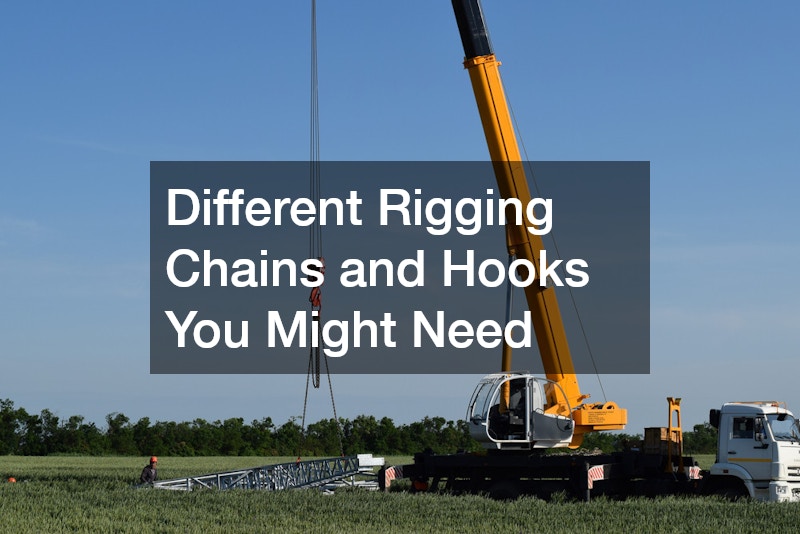Rigging chains and hooks are critical components in lifting and rigging operations across various industries, such as construction, manufacturing, and shipping. These tools ensure the safe and efficient handling of heavy loads. Selecting the appropriate chains and hooks for your specific needs is crucial for maintaining safety and operational efficiency. Here are different types of rigging chains and hooks you might need:
Rigging Chains
1. Alloy Steel Chains:
Alloy steel chains are known for their high strength and durability.
They are designed to handle heavy loads and harsh conditions, making them suitable for demanding applications like lifting, towing, and securing loads. These chains are typically heat-treated for enhanced strength and wear resistance. Common grades include Grade 80 and Grade 100, which offer high tensile strength and are suitable for overhead lifting.
2. Stainless Steel Chains:
Stainless steel chains are corrosion-resistant, making them ideal for use in marine environments, food processing, and other applications where exposure to moisture and chemicals is common. While they may not have the same tensile strength as alloy steel chains, their durability in corrosive environments makes them invaluable.
3. Galvanized Chains:
Galvanized chains are coated with a layer of zinc to protect against corrosion. They are suitable for outdoor use and environments where the chains are exposed to the elements. These chains are commonly used in construction, agriculture, and marine applications.
4. Proof Coil Chains:
Proof coil chains are general-purpose chains made from low-carbon steel. They are used for applications that do not require high strength, such as securing loads on trucks, general lifting, and tying down equipment. They are not recommended for overhead lifting due to their lower strength.
Rigging Hooks
1. Grab Hooks:
Grab hooks are designed to grab and hold a chain link. They are commonly used in chain shortening and tensioning applications. The hook’s design allows it to securely hold a link without slipping, making it ideal for load adjustments and securing chains at specific lengths.
2. Slip Hooks:
Slip hooks have a wider throat than grab hooks, allowing them to slip onto chains easily. They are often used in towing and lifting applications where the hook needs to move freely along the chain. The latch on slip hooks ensures that the load does not accidentally detach.
3. Clevis Hooks:
Clevis hooks have a U-shaped clevis and a pin, making them easy to attach and detach from chains and other rigging hardware. They are versatile and used in various lifting, towing, and securing applications. Clevis hooks come in both grab and slip varieties.
4. Swivel Hooks:
Swivel hooks have a swivel mechanism that allows the hook to rotate freely, preventing the chain or load from twisting. This feature is particularly useful in applications where the load may rotate, ensuring that the rigging remains secure and untangled.
5. Eye Hooks:
Eye hooks have a closed eye that can be permanently attached to a lifting sling or chain. They provide a secure and fixed attachment point, making them suitable for permanent or semi-permanent rigging setups. Eye hooks are available in both grab and slip designs.
Considerations for Selection
When selecting rigging chains and hooks, consider the following factors:
Load Capacity: Ensure that the chains and hooks can handle the maximum load weight with an appropriate safety margin.
Environmental Conditions: Choose materials that can withstand the specific environmental conditions, such as corrosion or extreme temperatures.
Application Requirements: Select the appropriate type of chain and hook based on the specific requirements of your lifting, towing, or securing tasks.
Safety Standards: Ensure that all rigging equipment meets industry safety standards and regulations to prevent accidents and ensure safe operations.


